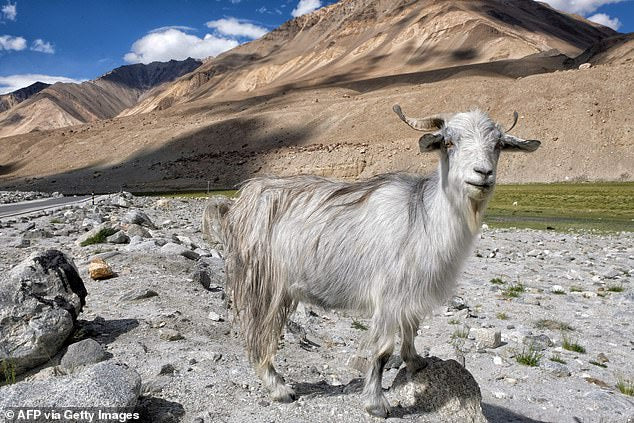All About Pashmina

What is Pashmina?
Pashmina is the name given to the wool derived from the neck and under-belly of the ‘Capra Hircus’ goat that thrives in the Himalayas at altitudes above 12,000 feet. At this altitude, the natural cashmere fibres are extremely fine (between 10-14 microns in diameter, or 6-8 times thinner than a human hair) which gives Pashmina garments an incredible warmth-to-weight ratio. Pashminas have been worn by the world’s elite for centuries.

1. Fibre Quality
We have all seen shops and street traders advertising ‘pashmina’ at ridiculously low prices. If a pashmina is being sold for a price that sounds too good to be true, then it usually is! The name 'pashmina' can be used by traders to advertise synthetic scarves that are made of plastic, rather than scarves that are made with sustainable, natural cashmere.
Even when the fibre is natural, there are still variations in quality depending on the supply chain and the region from which the pashmina wool was farmed. Our supplier in Nepal sources the finest quality pashmina. A good quality pashmina will be much lighter and softer to the touch than a poor quality pashmina.

2. Hand-made or machine-made garments?
A lot of the pashmina products that you see advertised on the internet will be machine-made rather than hand-made. The products made by machine will have a very unnatural, precise straight edge. If the threads of the garment are separated, a hand-woven garment will reshape so that no hole is visible, whereas a machine-made garment will not. Hand-woven garments tend to be of better quality and are made with the care and expertise that is indicative of Nepalese craftsmen.

3. Fabric Blend
This is one of the main factors that determine the difference in cost between the various pashmina products that are available. Probably the most popular and best-selling pashminas are actually a mixture of 30% silk and 70% pashmina. This is the fabric blend that is used for our Classic, Cut-Fringe, Shaded and Reversible pashminas. The garment is woven with the fine silk threads running along the lengthwise 'warp' yarns and the pashmina wool is woven across the transverse 'weft' yarns of the garment. The silk adds a sheen and weight to the garment that some people prefer and the material retains the exquisitely soft warmth and elegance associated with pashmina. The purest pashmina is made from 100% cashmere wool. Pure cashmere is extremely expensive and wholesale prices have risen considerably over the last 20 years. As such, most online retailers use a blend of cashmere and merino wool, which retains the weightless warmth and exquisite softness of the cashmere, but at a price that is affordable.
Our pashminas contain a blend of 30% cashmere and 70% merino wool, which is sourced by our supplier in Nepal and hand woven into the delightful pashminas that are available on our website. Pure 100% cashmere pashmina would cost many multiples of the prices that we charge on our website. Unless the item has a designer name, a pure 100% cashmere pashmina scarf would cost several hundred pounds, which is something to consider when comparing items available from online retailers. We source the highest quality pashminas that are available at affordable prices.

4. Silk Grade
The silk grade used in the 70/30 Pashmina can be either 140 or 210. We use the premiere grade, 210, in all of our 70/30 Pashmina garments. Some manufacturers are trying to cut costs by using 140-grade silk – another aspect to think about when comparing costs.










